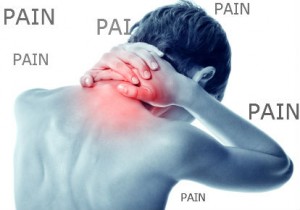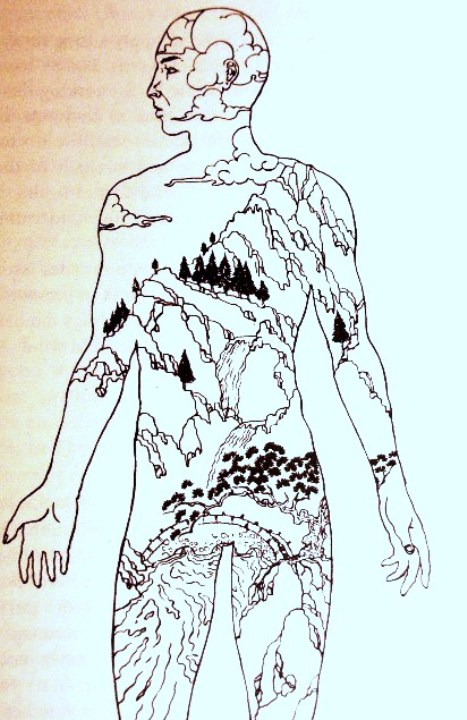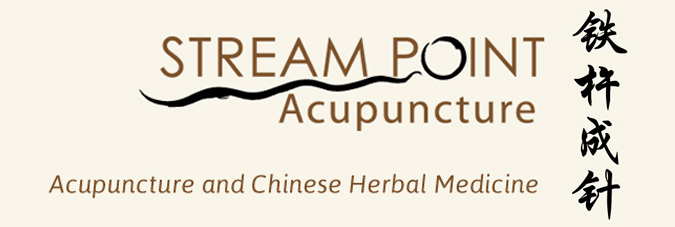 When we acupuncturists are in school, we’re taught that the treatment of pain is our Bread and Butter – except we don’t call it pain, or arthritis, or carpal tunnel syndrome, or sciatica…instead we say “Bi Syndromes”. If you’ve been treated for some kind of pain condition by one of us, chances are you’ve heard us using some strange terms to diagnose your pain such as “wind-cold-damp has invaded your Gall Bladder Meridian” or “There is a Qi and Blood stagnation in your Taiyang Channels”
When we acupuncturists are in school, we’re taught that the treatment of pain is our Bread and Butter – except we don’t call it pain, or arthritis, or carpal tunnel syndrome, or sciatica…instead we say “Bi Syndromes”. If you’ve been treated for some kind of pain condition by one of us, chances are you’ve heard us using some strange terms to diagnose your pain such as “wind-cold-damp has invaded your Gall Bladder Meridian” or “There is a Qi and Blood stagnation in your Taiyang Channels”
So what’s the deal with these strange diagnoses? You see TCM has its most ancient roots in Taosim, which is a philosophy that’s deeply connected with nature. As a result, when the first practitioners of this medicine tried to evaluate their patients, they thought of themselves as gardeners, and the patients were their garden. A garden, as many of us know, is very easily affected by climate – things like wind, dampness, dryness, heat, and cold affect the quality of the garden. In turn, TCM practitioners came to the conclusion that these same climates (both literally and figuratively) affected the human on both a physical and energetic level.
 Getting back to the treatment of pain, “Bi Syndrome” literally translates as “painful obstruction”, which essentially means that the flow of Qi and Blood has become stagnated by some type of pathological factor. From there the Bi Syndrome must be further elucidated into this same garden principle. We look at which climate combination is most likely contributing to the painful obstruction. Sometimes this is taken literally – as we see certain patterns of pain during certain seasons and geographical locations. Other times it’s taken more metaphorically in that we look at how the pain is presenting itself, and try to connect it to which climate conditions would cause comparative damage to the garden. For example, a person in pain accompanied by swelling, edema, heaviness, and dizziness would be considered to have a “Damp Bi Syndrome”. On the contrary, a person presenting with pain accompanied with swelling, redness, hot skin, throbbing pain, and feverishness would be considered to have a “Hot Bi Syndrome”. Also, none of these syndromes would be possible without Wind, which is why the full name of these Bi Syndromes is often “Wind-Damp-Heat” or “Wind-Damp-Cold”. The quality of wind is moving and dispersing, so it’s able to push its way into your meridians and cause all kinds of ruckus; the damp, cold, and heat factors piggy-back on.
Getting back to the treatment of pain, “Bi Syndrome” literally translates as “painful obstruction”, which essentially means that the flow of Qi and Blood has become stagnated by some type of pathological factor. From there the Bi Syndrome must be further elucidated into this same garden principle. We look at which climate combination is most likely contributing to the painful obstruction. Sometimes this is taken literally – as we see certain patterns of pain during certain seasons and geographical locations. Other times it’s taken more metaphorically in that we look at how the pain is presenting itself, and try to connect it to which climate conditions would cause comparative damage to the garden. For example, a person in pain accompanied by swelling, edema, heaviness, and dizziness would be considered to have a “Damp Bi Syndrome”. On the contrary, a person presenting with pain accompanied with swelling, redness, hot skin, throbbing pain, and feverishness would be considered to have a “Hot Bi Syndrome”. Also, none of these syndromes would be possible without Wind, which is why the full name of these Bi Syndromes is often “Wind-Damp-Heat” or “Wind-Damp-Cold”. The quality of wind is moving and dispersing, so it’s able to push its way into your meridians and cause all kinds of ruckus; the damp, cold, and heat factors piggy-back on.
So what does this have to do with winter? Well, remember when you were little and heard your grandma and grandpa say “oh the weather is about to get cold, I can feel it in my bones!” – well that’s because the winter season is the time of year we see “Cold Bi Syndromes” the most. Cold Bi Syndromes are your text-book arthritis conditions where you see fixed stabbing pains with limited mobility and stiffness that tends to be worse in cold weather. And thus, this is the time of year that arthritis tends to flare up, so before it gets too cold, we want to get you guys prepped to have a winter that’s as pain free as possible.
1. Don’t fall behind on your health visits – whether you’re finding the most relief with acupuncture, massage, chiropractic, physical therapy, or another approach – keep up with it. The more regular you can be with your visits, the stronger your energy will be to keep your Qi flowing smoothly and abundantly. With acupuncture specifically, your treatments will still be anchored in breaking up any stagnation in your meridians, however it’s likely that we’ll also start incorporating more warming and dispersing treatments like moxibustion, gua sha, and cupping; and we may send you home with some warming herbal formulas to bolster the treatments. We’ll touch more on these in the coming weeks.
2. Like your parents told you, keep yourself bundled up when it’s cold, especially your neck. In terms of energy, your body is most susceptible to the invasion of wind through the neck, so we want to see you wearing your scarves…chances are we’ll also be wearing them in the clinic too. And while we’re at it, don’t go outside with your hair wet!
3. Try to stick to warm and moist foods – root vegetables, stews, and soups like Pho are your new best friend. We’ll talk more about the nutritional and energetic qualities of these foods in the coming weeks as well!
That’s all for now friends, so in the mean time, stay warm and tend to your garden with love!

